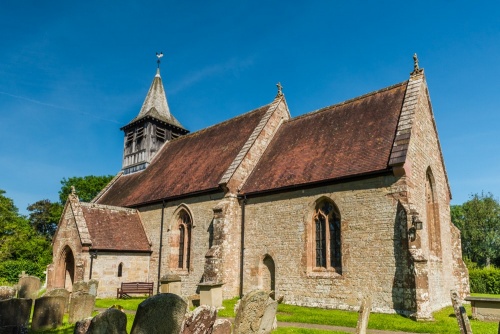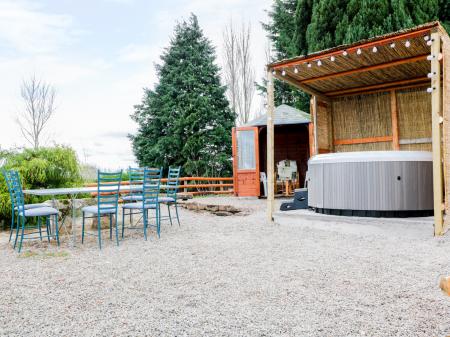
Between 1300 and 1546 Sollers Hope was home to the Whittingtons, and the church here is thought to be the work of Robert Whittington, the elder brother of Dick Whittington. It is possible that young Dick Whittington attended Sollers Hope church before setting out for London.
The church is built of sandstone rubble dressed with ashlar. The exterior is very simple, with a nave, chancel, south porch, and north vestry. There is no tower, but in its place is a 19th-century timber-framed bell turret.

Within the church, the most interesting monument is a slab tomb and effigy to a medieval knight which may date to as early as the 13th century. Three stone coffin lids dating to the 13th century are against the west wall of the nave. The nave and chancel roofs date to the 14th century. The rather plain, cylindrical font bowl is 13th century, though it stands on a modern base.
The communion table is 18th century. There are fragments of medieval glass in several windows; perhaps the earliest is 14th-century glass in the north chancel window. There are more 14th-century glass fragments in the west nave window and 15th-century glass in the tracery of the north and south nave windows. There is a reset 13th-century piscina in the chancel, and the pulpit dates to the early 17th century.

Look for graffiti scratched on the east jamb of the south doorway, with the initials TW and the date 1636.
In the churchyard is the partial remains of a medieval stone cross, thought to be 15th century, though the upper section of the shaft and the cross head are modern. Also in the churchyard are several 17th-century gravestones, including one to William Tailer (d. 1673) and to a member of the Apperley family who died in 1673. In the porch are more 17th-century gravestones, including one to Richard Gamond, 1649–50, and his wife Jane (d. 1657).
Immediately behind the church is a tump which marks the site of a Roman camp. See also St Andrews church in Hampton Bishop, which contains memorials to members of the Whittington family.











 We've 'tagged' this attraction information to help you find related historic attractions and learn more about major time periods mentioned.
We've 'tagged' this attraction information to help you find related historic attractions and learn more about major time periods mentioned.



